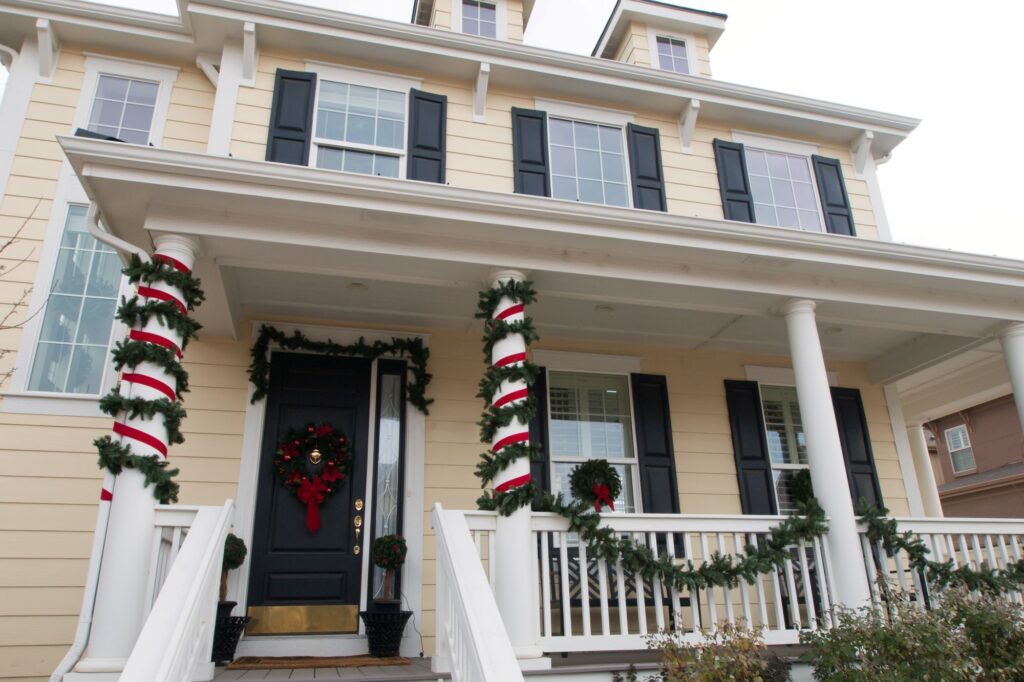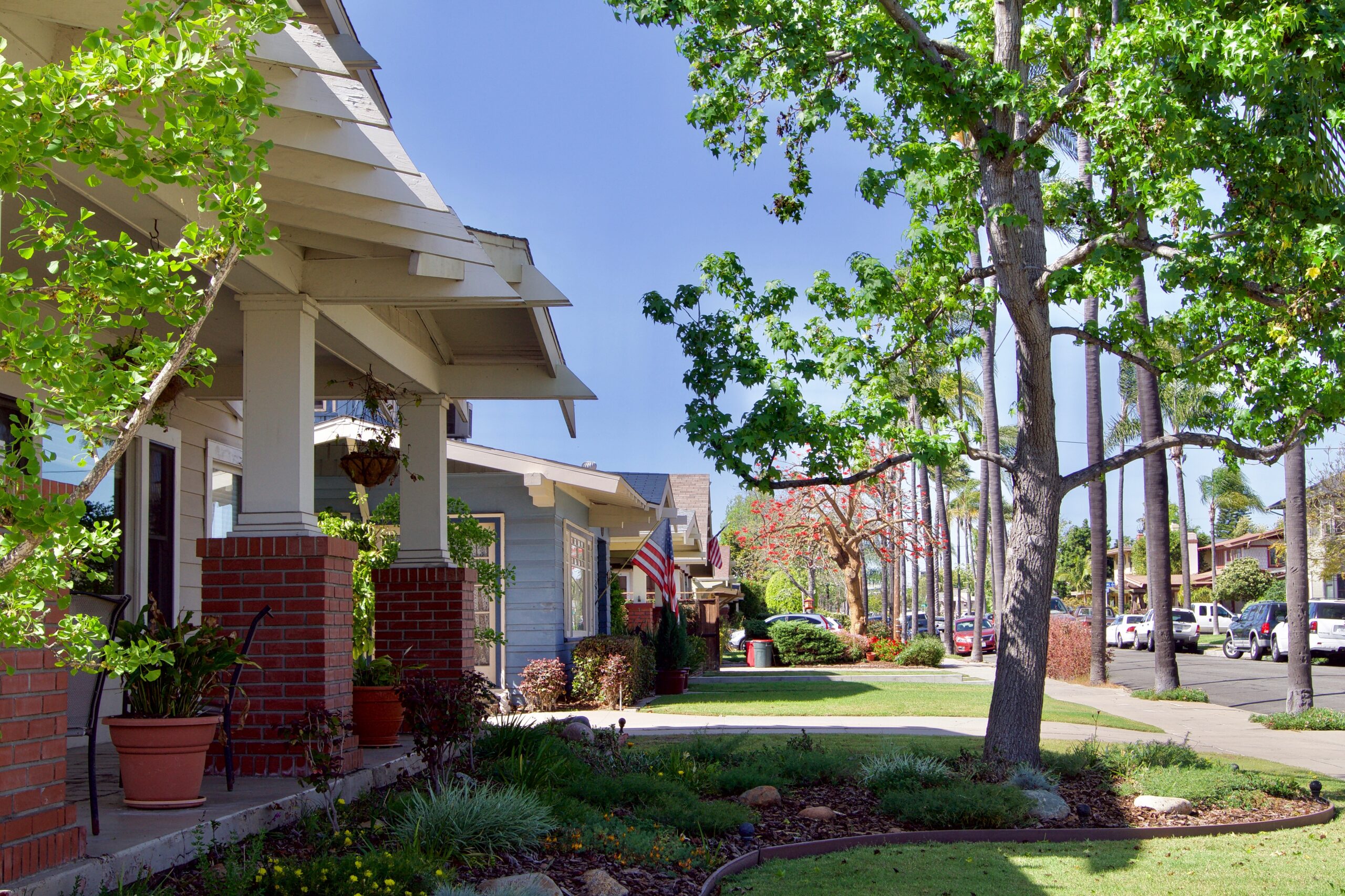Navigating HOA décor: Can you have lights up all year?
HOAs favor uniformity to maintain or enhance property value. For this reason, they create architectural standards and complementary rules so that homes are aesthetically pleasing to all.
While some owners may view the standards as limiting or bland, they prevent owners from disrupting neighbors with flashy light displays or loud animatronics. You won’t see outdoor Christmas trees on an HOA lawn in the middle of July.
Most HOA members know that there are limits when it comes to traditional holiday decorations. But what about subtle white lighting or modest décor?
In this article, we’ll cover the general rules, plus get into more detailed elements of décor restrictions.
Table of contents
- Why do HOAs need rules for holiday décor?
- Common holiday décor rules
- Are there limits for religious symbols/décor?
- What about subtle lighting?
- Décor policies should be clear and reasonable
Why do HOAs need rules for holiday décor?
As discussed earlier, aesthetics are important to HOAs. They value uniformity, which is why they create limits on what owners can do when it comes to decorating their homes.
However, when it comes to the Fourth of July, Halloween, Thanksgiving and Christmas, this matter is rarely simple.

That’s because there is no “standard” for decorations. As a result, some communities will have very strict rules, while others will allow inflatable decorations on lawns or decorative reindeer on the roof.
You will need to refer to your HOA’s décor policy to find out how creative you can get when it comes to making your home look festive.
Common holiday décor rules
While the rules for décor vary quite a bit, many communities have similar time periods for holiday décor.
Owners may have permission to start decorating as early as 30 days before the holiday begins, and anywhere from 2 weeks to 1 month to remove décor after the holiday ends.
Size and placement are also addressed so that owners can enjoy holiday fun without going overboard. For example, if inflatable Santas are allowed, owners may be limited to 1 per household.
Most HOA decoration rules include restrictions regarding:
- Noise – rules may limit the use of decorations that produce sound. This can include musical lights.
- Size – some HOAs prohibit oversized inflatables, large displays, or items that could obstruct views or pose safety hazards.
- Timing – there are timeframes for which holiday decorations can be put up and removed.
- Color – certain color schemes may be required to maintain a uniform appearance.
- Etiquette – HOAs typically prohibit offensive or inappropriate themes. Some Halloween décor might be too gory.
- Location – restrictions can also apply to the placement of décor, limiting displays to doors and windows and not allowing anything on rooftops or trees.
Are there limits for religious symbols/décor?
This question can be harder to navigate, so always contact the HOA attorney if you have doubts.
The Fair Housing Act prevents HOAs from establishing guidelines that are discriminatory against any owner who observes or practices a particular religion.
For example, bylaws should never say that community members can’t display “Christmas decorations”, “Hanukkah decorations” or other decorations specific to a particular religious holiday.
Instead, bylaws might ban certain types of “holiday decorations or displays,” in general.
Boards may adopt reasonable rules limiting when owners can start decorating and how long decorations can remain up after the holiday has passed.
In California, according to Davis-Stirling, community associations cannot prohibit the display of religious items on entry doors and door frames (Civ. Code § 4706). These can be displayed permanently.
In this instance, a religious item is defined to mean an item displayed because of sincerely held religious beliefs. Religious symbols that qualify include the Jewish Mezuzah and the Christian cross. Davis-Stirling adds that Christmas wreaths and lights would not likely qualify as religious symbols.
Associations can impose some limitations to prevent these symbols from:
- threatening public health or safety
- hindering the opening or closing of any entry door
- violating any federal, state, or local laws
Displays cannot be more than 36 by 12 square inches, individually or combined.
Religious symbols and displays may be permitted year-round, but there will be limitations as to where they can be placed and how large they can be. Always check rules and bylaws first to see what limitations apply to your HOA.
What about subtle lighting?
Permanent, programmable, exterior LED lighting systems, Trimlight being one of the most popular options, are designed for year-round use.
These systems are installed along the roofline of the home and allow for customizable, color-changing displays for holidays, special events, or general aesthetic enhancements.
This type of system might be allowed, but you should check for any light-specific policies first, as rules can differ significantly depending on your community. Furthermore, your HOA probably won’t permit you to display green and red lights in the middle of summer, but this would be okay around Christmas time.
Many U.S. HOAs do not address outdoor lighting requirements. However, those that do tend to focus on preventing light trespass, which is a condition where light originating from one property is received on another. If your HOA is silent on this issue, consider making guidelines for your owners.
Some HOA lighting rules may include timing schedules for lights to be on. For example, the exterior lights must be turned off at 11 p.m. While that rule doesn’t prevent light from trespassing onto another property, it at least prevents owners from being exposed to too much light late a night.
Décor policies should be clear and reasonable
The best way to ensure HOA owners follow décor and lighting rules is to:
- Establish clear, specific rules that address timeframes, location and size. Ambiguous policies lead to confusion and misunderstandings. Plus, it would be very unfortunate for someone to spend a lot of money on something only to later find out that they can’t have it in their front yard.
- Make sure those rules can be accessed with ease. This is where having a website comes in handy. By sharing rules or policies on a password-protected section of your HOA site, you ensure everyone has the most current information at their fingertips without first having to request it from you or your staff.
When everyone knows what’s expected, misunderstandings and violations are minimized, and the holidays can be celebrated as they were intended.
Associations are encouraged to find a balance between maintaining an aesthetically pleasing environment and allowing owners to enjoy the holidays. Remember that rules can be amended if they are no longer relevant or useful.
Rules that are not in writing cannot be enforced.
Finally, be prepared to enforce the rules. If there are no consequences for ignoring rules, owners have no real reason to follow them.




